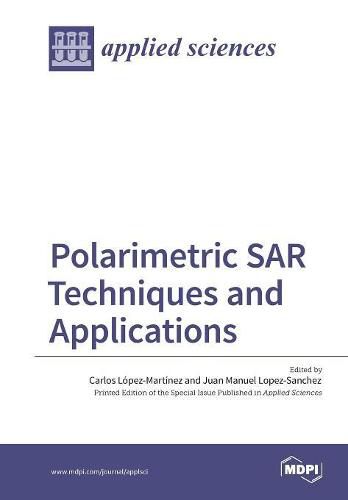Readings Newsletter
Become a Readings Member to make your shopping experience even easier.
Sign in or sign up for free!
You’re not far away from qualifying for FREE standard shipping within Australia
You’ve qualified for FREE standard shipping within Australia
The cart is loading…






This title is printed to order. This book may have been self-published. If so, we cannot guarantee the quality of the content. In the main most books will have gone through the editing process however some may not. We therefore suggest that you be aware of this before ordering this book. If in doubt check either the author or publisher’s details as we are unable to accept any returns unless they are faulty. Please contact us if you have any questions.
An increasing number of spaceborne Synthetic Aperture Radar (SAR) systems have been equipped with polarimetric capabilities: ALOS and ALOS-2, Radarsat-2, TerraSAR-X, Envisat-ASAR, Sentinel-1a/b, etc. Future mission will still present this type of diversity: RCM, SAOCOM, Cosmo-Skymed 2nd generation or PAZ.
Polarimetry allows sensitivity to the structural and geometric properties of the scene, making it possible a more accurate identification and classification than non-polarimetric systems. Then, polarimetry makes possible new applications, especially in quantitative extraction of bio and geophysical variables. Also, the combination of polarimetry and interferometry allows also to explore the vertical structure of semi-transparent media, like crops and forests. SAR polarimetry is an active field of research in Earth observation. Besides the development of applications, researchers have also focused in theory or physical modelling to make SAR polarimetry an operational technique.
This book presents the state of the art in SAR polarimetry, from theory and physical modelling to final applications, but also the current and futures challenges. This book puts also the emphasis on studies for the exploitation of data provided by the new polarimetric space borne SAR sensors, which include additional frequency bands, interferometric capability, enlarged spatial coverage, high spatial resolution and/or shorter revisit times.
$9.00 standard shipping within Australia
FREE standard shipping within Australia for orders over $100.00
Express & International shipping calculated at checkout
This title is printed to order. This book may have been self-published. If so, we cannot guarantee the quality of the content. In the main most books will have gone through the editing process however some may not. We therefore suggest that you be aware of this before ordering this book. If in doubt check either the author or publisher’s details as we are unable to accept any returns unless they are faulty. Please contact us if you have any questions.
An increasing number of spaceborne Synthetic Aperture Radar (SAR) systems have been equipped with polarimetric capabilities: ALOS and ALOS-2, Radarsat-2, TerraSAR-X, Envisat-ASAR, Sentinel-1a/b, etc. Future mission will still present this type of diversity: RCM, SAOCOM, Cosmo-Skymed 2nd generation or PAZ.
Polarimetry allows sensitivity to the structural and geometric properties of the scene, making it possible a more accurate identification and classification than non-polarimetric systems. Then, polarimetry makes possible new applications, especially in quantitative extraction of bio and geophysical variables. Also, the combination of polarimetry and interferometry allows also to explore the vertical structure of semi-transparent media, like crops and forests. SAR polarimetry is an active field of research in Earth observation. Besides the development of applications, researchers have also focused in theory or physical modelling to make SAR polarimetry an operational technique.
This book presents the state of the art in SAR polarimetry, from theory and physical modelling to final applications, but also the current and futures challenges. This book puts also the emphasis on studies for the exploitation of data provided by the new polarimetric space borne SAR sensors, which include additional frequency bands, interferometric capability, enlarged spatial coverage, high spatial resolution and/or shorter revisit times.